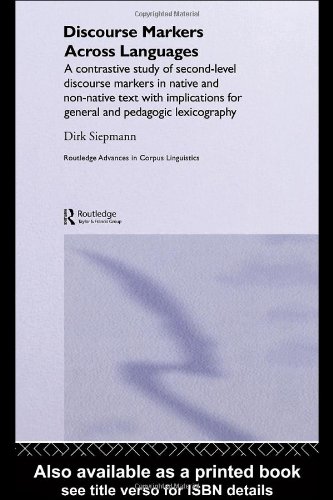

Most ebook files are in PDF format, so you can easily read them using various software such as Foxit Reader or directly on the Google Chrome browser.
Some ebook files are released by publishers in other formats such as .awz, .mobi, .epub, .fb2, etc. You may need to install specific software to read these formats on mobile/PC, such as Calibre.
Please read the tutorial at this link. https://ebooknice.com/page/post?id=faq
We offer FREE conversion to the popular formats you request; however, this may take some time. Therefore, right after payment, please email us, and we will try to provide the service as quickly as possible.
For some exceptional file formats or broken links (if any), please refrain from opening any disputes. Instead, email us first, and we will try to assist within a maximum of 6 hours.
EbookNice Team

Status:
Available0.0
0 reviews
ISBN-10 : 020331526X
ISBN-13 : 9780203315262
Author: Dirk Siepmann
This book offers a corpus-based comparative study of an almost entirely unexplored set of multi-word lexical items serving pragmatic or text-structuring functions. Part One provides a descriptive account of multi-word discourse markers in written English, French and German, focussing on dicussion of interlingual equivalence. Part Two examines the use of multi-word markers by non-native speakers of English and discusses lexicographical and pedagogical implications.
Part I Linguistic considerations
1 Observing languages
1.1 Aims, scope and methodology
1.2 Corpora and corpus-enquiry tools
2 Investigating routines
2.1 Pragmatic perspectives on discourse markers
2.2 Lexicological perspectives on multi-word discourse markers
2.3 Syntactic realizations of SLDMs
3 Identifying meanings and functions
3.1 Introduction
3.2 Language functions and textual relations
3.3 A taxonomy of SLDMs
3.4 Points of interest
4 Straddling cultures
4.1 Exemplifiers
4.2 Reformulators and resumers
4.3 Inferrers
4.4 Summary and conclusion
Part II A contrastive interlanguage analysis with implications for dictionary making
1 Introduction
2 Facing realities
2.1 Interlanguage analysis
2.2 German writers’ performance in the field of discourse markers
2.3 Translations under the spotlight
2.4 Conclusion
3 Lexicographic treatment of SLDMs
3.1 Lexicographic coverage of SLDMs
3.2 Macrostructural and microstructural treatment of SLDMs
3.3 Sample entries
4 Avenues for further research
Notes
PART I
1 Observing languages: introduction to Part I
2 Investigating routines: defining and describing multi-word discourse markers
4 Straddling cultures: three types of second-level discourse markers in contrastive perspective
PART II
1 Introduction
2 Facing realities: the performance of non-native writers and translators
3 Lexicographic treatment of SLDMs
what is a discourse marker in spanish
discourse markers and functions
discourse markers advanced
discourse markers 2
discourse markers in amharic
Tags: Discourse Markers, Across Languages, Contrastive Study, Second level, Discourse Markers, Implications, General, Pedagogic Lexicography, Dirk Siepmann